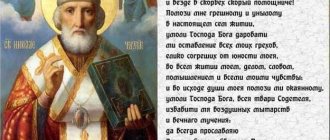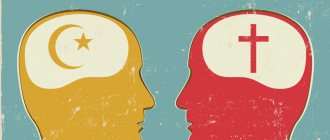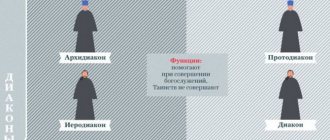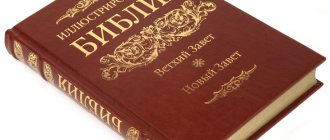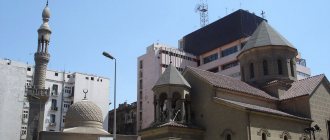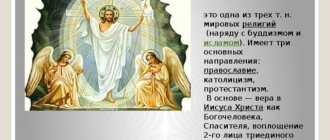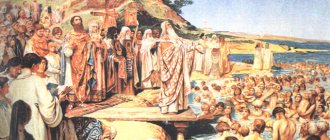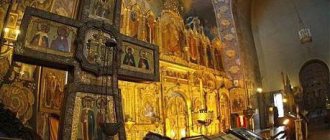On February 11, Patriarch Kirill of Moscow and All Rus' begins his first pastoral visit to the countries of Latin America, which will last until February 22 and will cover Cuba, Brazil and Paraguay. On February 12, at the Jose Marti International Airport in the Cuban capital, the head of the Russian Orthodox Church will meet with Pope Francis, who will make a stop on his way to Mexico. The meeting of the primates of the Russian Orthodox and Roman Catholic churches, which has been in preparation for 20 years, will take place for the first time. As Vladimir Legoyda, Chairman of the Synodal Department for Relations between the Church and Society and the Media, noted, the upcoming historic meeting is caused by the need for joint action in matters of assistance to Christian communities in the countries of the Middle East. “Although many problems between the Russian Orthodox Church and the Roman Catholic Church remain unresolved, the protection of Middle Eastern Christians against genocide is a challenge that requires urgent joint efforts,” Legoida said. According to him, “the exodus of Christians from the countries of the Middle East and North Africa is a disaster for the whole world.”
What problems between the Russian Orthodox Church and the Roman Catholic Church remain unresolved?
How is the Catholic Church different from the Orthodox Church? Catholics and Orthodox Christians answer this question somewhat differently. How exactly?
The separation of Orthodoxy and Catholicism is a great tragedy in the history of the Church
The division of the United Christian Church into Orthodoxy and Catholicism happened almost a thousand years ago - in 1054.
The One Church consisted, as the Orthodox Church still does, of many local Churches. This means that the Churches, for example, the Russian Orthodox or the Greek Orthodox, have some external differences in themselves (in the architecture of churches; singing; the language of services; and even in the way certain parts of services are conducted), but they are united in the main doctrinal issues, and there is Eucharistic communion between them. That is, a Russian Orthodox can receive communion and confess in a Greek Orthodox church and vice versa.
According to the Creed, the Church is one, because the head of the Church is Christ. This means that there cannot be several Churches on earth that would have different faiths
. And it was precisely because of disagreements in doctrinal issues that in the 11th century there was a division into Catholicism and Orthodoxy. As a consequence of this, Catholics cannot receive communion and confession in Orthodox churches and vice versa.
Catholic Cathedral of the Immaculate Conception of the Blessed Virgin Mary in Moscow. Photo: catedra.ru
What are the differences between Orthodoxy and Catholicism?
Today there are a lot of them. And they are conventionally divided into three types.
- Doctrinal differences
- because of which, in fact, the schism occurred. For example, the dogma of the infallibility of the Pope among Catholics. - The differences are ritual
. For example, Catholics have a different form of Communion from us or the vow of celibacy (celibacy) that is obligatory for Catholic priests. That is, we have fundamentally different approaches to some aspects of the Sacraments and Church life, and they can complicate the hypothetical reunification of Catholics and Orthodox. But they were not the reason for the split and they are not the ones preventing us from reuniting again. - Conditional differences in traditions.
For example, organs
in
temples; benches in the middle of the church; priests with or without beards; different forms of vestments for priests. In other words, external features that do not at all affect the unity of the Church - since some similar differences are found even within the Orthodox Church in different countries. In general, if the difference between Orthodox and Catholics were only in them, the United Church would never have been divided.
The division between Orthodoxy and Catholicism, which occurred in the 11th century, became for the Church, first of all, a tragedy, which was and is acutely experienced by both “us” and Catholics. Over the course of a thousand years, attempts at reunification were made several times. However, none of them turned out to be truly viable - and we will also talk about this below.
Main differences in dogma
Triadological:
• Orthodoxy does not accept the Catholic formulation of the Nicene-Constantinopolitan creed, the filioque, which speaks of the procession of the Holy Spirit not only from the Father, but also “from the Son” (lat. filioque).
• Orthodoxy professes two different ways of being of the Holy Trinity: the existence of Three Persons in the Essence and Their manifestation in energy. Roman Catholics, like Barlaam of Calabria (the opponent of St. Gregory Palamas), consider the energy of the Trinity to be created: the bush, glory, light and tongues of fire of Pentecost are considered by them to be created symbols, which, once born, then cease to exist.
• The Western Church considers grace to be a consequence of the Divine Cause, similar to the act of creation.
• The Holy Spirit in Roman Catholicism is interpreted as love (connection) between the Father and the Son, between God and people, while in Orthodoxy love is the common energy of all Three Persons of the Holy Trinity, otherwise the Holy Spirit would lose its hypostatic appearance when He is identified with love.
In the Orthodox Creed, which we read every morning, the following is said about the Holy Spirit: “And in the Holy Spirit, the Lord, the Life-Giving One, who proceeds from the Father...”. These words, as well as all other words of the Creed, find exact confirmation in the Holy Scriptures. Thus, in the Gospel of John (15, 26), the Lord Jesus Christ says that the Holy Spirit comes precisely from the Father. The Savior says: “When the Comforter comes, whom I will send to you from the Father, the Spirit of truth, who proceeds from the Father.” We believe in one God in the Holy Trinity worshiped - Father and Son and Holy Spirit. God is one in essence, but threefold in persons, which are also called Hypostases. All three Hypostases are equal in honor, equally worshiped and equally glorified. They differ only in their properties - the Father is unborn, the Son is born, the Holy Spirit comes from the Father. The Father is the only beginning (ἀρχὴ) or the only source (πηγή) for the Word and the Holy Spirit.
Mariological:
• Orthodoxy rejects the dogma of the Immaculate Conception of the Virgin Mary.
• In Catholicism, the significance of the dogma is the hypothesis of the direct creation of souls by God, which serves as support for the dogma of the Immaculate Conception.
• Orthodoxy also rejects the Catholic dogma of the bodily ascension of the Mother of God.
Other:
• Orthodoxy recognizes as Ecumenical the seven Councils that took place before the great schism; Catholicism recognizes the twenty-one Councils as Ecumenical, including those that took place after the great schism.
• Orthodoxy rejects the dogma of the infallibility (inerrancy) of the Pope and his supremacy over all Christians.
• Orthodoxy does not accept the doctrine of purgatory, as well as the doctrine of the “extraordinary merits of the saints.”
• The doctrine of ordeals existing in Orthodoxy is absent in Catholicism.
• The theory of dogmatic development formulated by Cardinal Newman was adopted by the official teaching of the Roman Catholic Church. In Orthodox theology, the problem of dogmatic development has never played the key role that it acquired in Catholic theology from the middle of the 19th century. Dogmatic development began to be discussed in the Orthodox community in connection with the new dogmas of the First Vatican Council. Some Orthodox authors consider acceptable “dogmatic development” in the sense of an ever more precise verbal definition of dogma and an ever more precise expression in words of the known Truth. At the same time, this development does not mean that the “understanding” of Revelation is progressing or developing.
With some vagueness in determining the final position on this problem, two aspects characteristic of the Orthodox interpretation of the problem are visible: the identity of church consciousness (the Church knows the truth no less and no differently than it knew it in ancient times; dogmas are understood simply as the understanding of what has always existed in the Church, starting from the apostolic age) and turning attention to the question of the nature of dogmatic knowledge (the experience and faith of the Church is broader and more complete than its dogmatic word; the Church testifies to many things not in dogmas, but in images and symbols; Tradition in its entirety is a guarantor of freedom from historical accident; the completeness of Tradition does not depend on the development of dogmatic consciousness; on the contrary, dogmatic definitions are only a partial and incomplete expression of the completeness of Tradition).
In Orthodoxy there are two points of view regarding Catholics.
• The first considers Catholics to be heretics who distorted the Nicene-Constantinopolitan Creed (by adding (lat. filioque).
• The second - schismatics (schismatics), who broke away from the One Catholic Apostolic Church.
Catholics, in turn, consider the Orthodox to be schismatics who have broken away from the One, Universal and Apostolic Church, but do not consider them heretics. The Catholic Church recognizes that local Orthodox Churches are true Churches that have preserved apostolic succession and true sacraments.
What is the difference between Catholicism and Orthodoxy - what actually divided the Church?
Western and Eastern Christian Churches - such a division has always existed. The Western Church is conditionally the territory of modern Western Europe, and later all the colonized countries of Latin America. The Eastern Church is the territory of modern Greece, Palestine, Syria, and Eastern Europe.
However, the division we are talking about was conditional for many centuries. Too different peoples and civilizations inhabit the Earth, so it is natural that the same teaching in different parts of the Earth and countries could have some characteristic external forms and traditions. For example, the Eastern Church (the one that became Orthodox) has always practiced a more contemplative and mystical lifestyle. It was in the East in the 3rd century that the phenomenon of monasticism arose, which then spread throughout the world. The Latin (Western) Church has always had an image of Christianity that is outwardly more active and “social.”
In the main doctrinal truths they remained common.
Venerable Anthony the Great, founder of monasticism
Perhaps disagreements that later became insurmountable could have been noticed much earlier and “agreeed upon.” But in those days there was no Internet, there were no trains and cars. Churches (not only Western and Eastern, but simply separate dioceses) sometimes existed on their own for decades and rooted certain views within themselves. Therefore, the differences that caused the division of the Church into Catholicism and Orthodoxy turned out to be too deep-rooted at the time of the “decision making”.
This is what the Orthodox cannot accept in Catholic teaching.
- the infallibility of the Pope and the doctrine of the primacy of the Roman throne
- changing the text of the Creed
- doctrine of purgatory
Papal infallibility in Catholicism
Each church has its own primate - head. In Orthodox Churches this is the patriarch. The head of the Western Church (or the Latin Cathedra, as it is also called) was the pope, who now presides over the Catholic Church.
The Catholic Church believes that the Pope is infallible. This means that any judgment, decision or opinion that he voices before the flock is the truth and law for the entire Church.
The current Pope is Francis
According to Orthodox teaching, no person can be higher than the Church. For example, an Orthodox patriarch, if his decisions go against the teachings of the Church or deep-rooted traditions, may well be deprived of his rank by decision of a council of bishops (as happened, for example, with Patriarch Nikon in the 17th century).
In addition to the infallibility of the pope, in Catholicism there is a doctrine of the primacy of the Roman throne (Church). Catholics base this teaching on an incorrect interpretation of the words of the Lord in a conversation with the apostles in Caesarea Philippi - about the alleged superiority of the Apostle Peter (who later “founded” the Latin Church) over the other apostles.
(Matthew 16:15-19) “He says to them: Who do you say that I am? Simon Peter answered and said: You are the Christ, the Son of the Living God. Then Jesus answered and said to him, Blessed are you, Simon son of Jonah, because flesh and blood has not revealed this to you, but My Father who is in heaven; and I say to you: you are Peter, and on this rock I will build My Church, and the gates of hell will not prevail against it; And I will give you the keys of the kingdom of heaven: and whatever you bind on earth will be bound in heaven, and whatever you loose on earth will be loosed in heaven.”
.
You can read more about the dogma of papal infallibility and the primacy of the Roman throne here.
Distinctive features of Catholicism
Photo: Flickr.com
Catholicism is the first in terms of the number of followers (more than 1.2 billion). It is headed by the Pope, who is actually the supreme ruler of the Holy See, and not the Patriarch. However, not so long ago, all bishops in Catholicism were also called popes.
It must also be taken into account that despite the widespread opinion that the Pope is completely infallible, this is not the case. Only his religious statements and decisions made within the framework of church governance are infallible.
The difference between Orthodox and Catholics: the text of the Creed
The different text of the Creed is another reason for disagreement between Orthodox and Catholics, although the difference is only one word.
The Creed is a prayer that was formulated in the 4th century at the First and Second Ecumenical Councils, and it put an end to many doctrinal disputes. It states everything that Christians believe.
What is the difference between the texts of Catholics and Orthodox? We say that we believe “And in the Holy Spirit who proceeds from the Father,” and Catholics add: “...from “the Father and the Son who proceeds...”.”
In fact, the addition of just this one word “And the Son...” (Filioque) significantly distorts the image of the entire Christian teaching.
The topic is theological, difficult, and it’s better to read about it right away, at least on Wikipedia.
The doctrine of purgatory is another difference between Catholics and Orthodox
Catholics believe in the existence of purgatory, but Orthodox Christians say that nowhere - not in any of the books of the Holy Scriptures of the Old or New Testaments, and even in none of the books of the Holy Fathers of the first centuries - is there any mention of purgatory.
It is difficult to say how this teaching arose among Catholics. However, now the Catholic Church fundamentally proceeds from the fact that after death there is not only the Kingdom of Heaven and hell, but also a place (or rather, a state) in which the soul of a person who died in peace with God finds himself, but is not holy enough to find himself in Paradise. These souls, apparently, will definitely come to the Kingdom of Heaven, but first they need to undergo purification.
Orthodox Christians view the afterlife differently than Catholics. There is Heaven, there is hell. There are ordeals after death in order to strengthen oneself in peace with God (or to fall away from Him). There is a need to pray for the dead. But there is no purgatory.
You can read more about purgatory again on Wikipedia.
***
These are the three reasons why the difference between Catholics and Orthodox is so fundamental that a division of the Churches arose a thousand years ago.
At the same time, over 1000 years of separate existence, a number of other differences arose (or took root), which are also considered to be what distinguishes us from each other. Some concerns external rituals - and this may seem to be quite a serious difference - and some concerns external traditions that Christianity acquired here and there.
Orthodoxy and Catholicism: differences that don't really separate us
Catholics receive communion differently from us - is that true?
Orthodox Christians partake of the Body and Blood of Christ from the chalice. Until recently, Catholics received communion not with leavened bread, but with unleavened bread - that is, unleavened bread. Moreover, ordinary parishioners, unlike clergy, received communion only with the Body of Christ.
Before we talk about why this happened, it should be noted that this form of Catholic Communion has recently ceased to be the only one. Now other forms of this Sacrament are appearing in Catholic churches, including the “familiar” one for us: Body and Blood from the Chalice.
And the tradition of Communion, different from ours, arose in Catholicism for two reasons:
- Regarding the use of unleavened bread:
Catholics proceed from the fact that in the time of Christ, Jews at Passover did not break leavened bread, but unleavened bread. (The Orthodox proceed from the Greek texts of the New Testament, where, when describing the Last Supper, which the Lord celebrated with his disciples, the word “artos” is used, meaning leavened bread) - Regarding the communion of parishioners only with the Body
: Catholics proceed from the fact that Christ abides equally and fully in any of the parts of the Holy Gifts, and not only when they are united together.
(The Orthodox are guided by the text of the New Testament, where Christ speaks directly about His Body and Blood. Matthew 26:26-28: “ And as they were eating, Jesus took bread and blessed it, broke it, and giving it to the disciples, said: Take, eat: this is My Body. And taking the cup and giving thanks, he gave it to them and said, “Drink from it, all of you, for this is My Blood of the New Testament, which is shed for many for the remission of sins
.”
They sit in Catholic churches
Generally speaking, this is not even a difference between Catholicism and Orthodoxy, since in some Orthodox countries - for example, in Bulgaria - it is also customary to sit, and in many churches there you can also see many benches and chairs.
There are many benches, but this is not a Catholic, but an Orthodox church - in New York.
Catholic churches have an organ
It is also a misconception to believe that organs are only found in Catholic churches. They are, for example, in some Orthodox churches in Greece - a country that is considered one of the strongholds of Orthodoxy in the world.
The organ is part of the musical accompaniment of the service. Music is one of the integral parts of the service, because if it were otherwise, there would be no choir, and the entire service would be read. Another thing is that we Orthodox Christians are now accustomed to just singing.
photo: catedra.ru
In many Latin countries, an organ was also installed in churches, because it was considered a divine instrument - its sound was so sublime and unearthly.
(At the same time, the possibility of using the organ in Orthodox worship was also discussed in Russia at the Local Council of 1917-1918. A supporter of this instrument was the famous church composer Alexander Grechaninov.)
Vow of celibacy among Catholic priests (Celibacy)
In Orthodoxy, a priest can be either a monk or a married priest. We have written about this in some detail.
In Catholicism, any clergyman is bound by a vow of celibacy.
Catholic priests shave their beards
This is another example of different traditions, and not of any fundamental differences between Orthodoxy and Catholicism. Whether a person has a beard or not does not in any way affect his holiness and does not say anything about him as a good or bad Christian. It’s just that in Western countries it has been common for some time to shave the beard (most likely, this is the influence of the Latin culture of Ancient Rome).
Nowadays no one forbids Orthodox priests from shaving their beards. It’s just that a beard on a priest or monk is such an ingrained tradition among us that breaking it can become a “temptation” for others, and therefore few priests decide to do it or even think about it.
Metropolitan Anthony of Sourozh is one of the most famous Orthodox pastors of the 20th century. For some time he served without a beard.
Duration of services and severity of fasts
It so happens that over the past 100 years, the Church life of Catholics has become significantly “simplified” - so to speak. The duration of services has been shortened, fasts have become simpler and shorter (for example, before communion it is enough not to eat food for only a few hours). Thus, the Catholic Church tried to reduce the gap between itself and the secular part of society - fearing that excessive strictness of the rules might scare away modern people. Whether this helped or not is difficult to say.
The Orthodox Church, in its views on the severity of fasts and external rituals, proceeds from the following:
Of course, the world has changed a lot and it will now be impossible for most people to live as strictly as possible. However, the memory of the Rules and strict ascetic life is still important. “By mortifying the flesh, we free the spirit.” And we must not forget about this - at least as an ideal to which we must strive in the depths of our souls. And if this “measure” disappears, then how to maintain the required “bar”?
***
This is only a small part of the external traditional differences that have developed between Orthodoxy and Catholicism.
However, it is important to know what unites our Churches:
- presence of Church Sacraments (communion, confession, baptism, etc.)
- veneration of the Holy Trinity
- veneration of the Mother of God
- veneration of icons
- veneration of holy saints and their relics
- common saints for the first ten centuries of the Church's existence
- Holy Bible
In February 2016, the first ever meeting between the Patriarch of the Russian Orthodox Church and the Pope (Francis) took place in Cuba. An event of historical proportions, but there was no talk of the unification of the Churches.
Which Christians are the most
Who are Catholics? These are representatives of Catholicism (from the Greek word “universal”, “ecumenical”) - one of the three main movements of Christianity along with Orthodoxy and Protestantism. Catholics are the largest Christian denomination: today there are more than 1.3 billion people.
“As soon as this incorrect wisdom had time to appear in the West, that the Holy Spirit also proceeds from the Son, it... little by little introduced with it other novelties, for the most part contradicting the commandments of our Savior clearly depicted in the Gospel, such as: sprinkling instead of immersion in The Sacrament of Baptism, the taking away of the divine Chalice from the laity and the use of unleavened bread instead of leavened bread, the exclusion of the invocation of the Holy Spirit from the Liturgy. It also introduced innovations that violated the ancient apostolic rites of the Catholic Church, such as: the exclusion of baptized infants from Confirmation, the exclusion of married men from the priesthood, and so on” (Reverend Ambrose of Optina).
Cathedral of Santa Maria del Fiore (Florence) - one of the most famous Catholic churches
Orthodoxy and Catholicism - attempts to unite (Union)
The separation of Orthodoxy and Catholicism is a great tragedy in the history of the Church, which is acutely experienced by both Orthodox and Catholics.
Several times over 1000 years, attempts were made to overcome the schism. The so-called Union was concluded three times - between the Catholic Church and representatives of the Orthodox Church. They all had the following in common:
- They were concluded primarily for political rather than religious reasons.
- Each time these were “concessions” on the part of the Orthodox. As a rule, in the following form: the external form and language of the services remained familiar to the Orthodox, but in all dogmatic disagreements the Catholic interpretation was taken.
- Having been signed by some bishops, they, as a rule, were rejected by the rest of the Orthodox Church - the clergy and the people, and therefore turned out to be essentially unviable. The exception is the last Union of Brest-Litovsk.
These are the three Unions:
Union of Lyons (1274)
She was supported by the emperor of Orthodox Byzantium, since unification with Catholics was supposed to help restore the shaky financial position of the empire. The union was signed, but the people of Byzantium and the rest of the Orthodox clergy did not support it.
Ferraro-Florentine Union (1439)
Both sides were equally politically interested in this Union, since the Christian states were weakened by wars and enemies (the Latin states - by the crusades, Byzantium - by the confrontation with the Turks, Rus' - by the Tatar-Mongols) and the unification of states on religious grounds would probably help , everyone.
The situation repeated itself: the Union was signed (although not by all representatives of the Orthodox Church who were present at the council), but it remained, in fact, on paper - the people did not support the unification on such conditions.
Suffice it to say that the first “Uniate” service was performed in the capital of Byzantium in Constantinople only in 1452. And less than a year later it was captured by the Turks...
Union of Brest (1596)
This Union was concluded between Catholics and the Orthodox Church of the Polish-Lithuanian Commonwealth (the state that then united the Lithuanian and Polish principalities).
The only example when the union of Churches turned out to be viable - albeit within the framework of only one state. The rules are the same: all services, rituals and language remain familiar to the Orthodox, however, at the services it is not the patriarch who is commemorated, but the pope; The text of the Creed is changed and the doctrine of purgatory is accepted.
After the division of the Polish-Lithuanian Commonwealth, part of its territories was ceded to Russia - and along with it a number of Uniate parishes were ceded. Despite the persecution, they continued to exist until the middle of the 20th century, until they were officially banned by the Soviet government.
Today there are Uniate parishes on the territory of Western Ukraine, the Baltic states and Belarus.
Uniate Church in the Belarusian village of Boruny
***
Mutual influence
Photo: Flickr.com
And despite the differences, there is a mutual influence of Orthodoxy on Catholic teaching, and vice versa. These include:
- The craving of Catholics for Orthodox icons, images of which can still be found in churches.
- Catholics are also attracted to the works of Orthodox theologians. They do not deny them and study them, fully maintaining the cultural level.
- Until the 19th century, Orthodox icon painting was partially influenced by Catholics. All this was partial, and not universal, and only until the Orthodox masters made a full-fledged transition to an academic manner.
- The adoption of worship from Catholicism is passion.
- Mutual influence on the architecture of each other's buildings. Orthodox architects took something from Catholic churches, and Catholics from Orthodox ones. However, no conflicts arose on this basis.
Orthodoxy and Catholicism still continue to borrow cultural aspects from each other. This is clearly confirmed by the meeting of the Pope and the Patriarch in 2016. It was within the framework of this meeting that issues important for both directions were discussed.
We recommend reading: Differences between Orthodoxy and Protestantism

